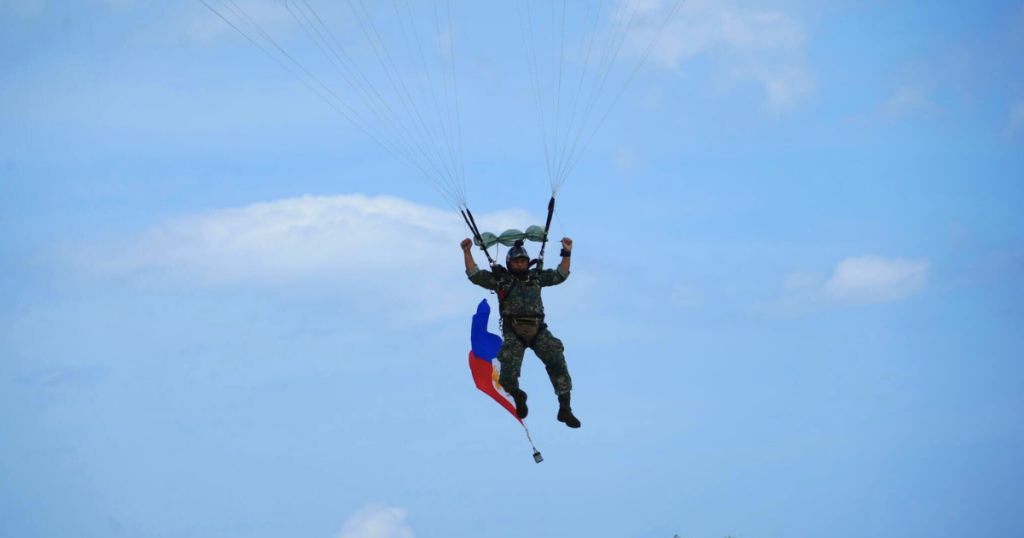Many first in Balikatan 2024
A Filipino military para-jumper carries the Philippine Flag as he descends from a U.S. Air Force Special Operations Command MC-130J at Long Beach, San Vicente, Palawan during the military free fall jump exercise on Tuesday, April 30. Photo from the Armed Forces of the Philippines.
By Manuel Mogato | Date 05-5-2024
Manila — This year’s Balikatan exercises will wrap up on May 10, but the Philippines did a lot first and learned from the best practices in conventional warfare and logistics operations.
“We learned a lot from this year’s activities, particularly in defending our territory from potential missiles, drone, and aircraft attack as well as amphibious landing operations from a hostile third party,” the army colonel said, summing up the important lessons from the exercises.
“We have not done these activities in the past, and its an eye-opener. We thought we could not do it, but the US helped us carry out these missions. This was the best Balikatan ever we had in decades.”
Learning from the US humanitarian operations on the shores of Gaza, the army colonel said a Philippine Air Force transport plane dropped supplies on a feature in the Spratlys, on Patag or Flat Island. On the second pass, the aircraft used a parachute to deliver supplies.
“We have not done that in the past, and it takes days for a ship to deliver supplies around Philippine-occupied features in the South China Sea,” the army colonel said. “The resupply mission was a success. Perhaps we will do the same in other features, including BRP Sierra Madre. The US helped supervise the operation, but our troops carried out the whole activity.”
The US and the Philippines also test-fired the High Mobility Artillery Rocket System (HIMARS) in Palawan, a first, but what was important was the US tested the flexibility and agility of its equipment in various terrain and islands in the country.
The US also tested how it could around its Typhoon missile launchers after they shipped from the mainland to Clark airfield. The equipment was to the north, travelling in mountainous terrain.
“No, we did not have time to test fire the Typhoon, but the US showed us the equipment could be deployed within 12 hours notice anywhere in northern Luzon,” he said, adding there was no decision to deploy the medium-range weapons system in the country temporarily. “It would be an added deterrent if the US decides to deploy the Typhoon in the Philippines.”
Apart from logistics, the US and Philippine forces tested for the first repulsing a beach landing by hostile forces. “In the past, our scenario is different; we are landing on a beach to retake an island or coastal area,” he said. “This time, we were the defenders.”
Finally, on the last week of the multilateral exercises, the US and the Philippines will sink a Chinese-made oil tanker in the Ilocos region.
The French, US and Philippines navies also held live-fire drills in the West Philippine Sea, west of Palawan, to test coordination and cooperation.
The Philippine frigate also test-fired its missile system while the air force had air defense missile drills using its Israel-made Spyder system.
“The integrated air defense missile drills showed for the first time how the country reacts to missile and drone attack in a simulated exercise, both actual and virtual.”
The army colonel said the Armed Forces will assess and review the Balikatan activity after it ends next week.

